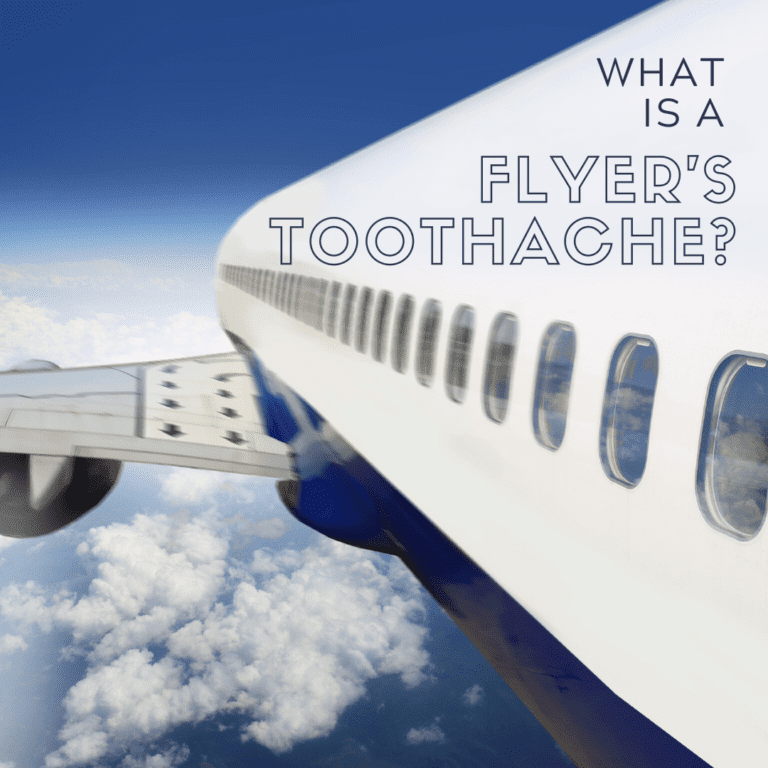What is a Flyer’s Toothache?


Did you know that WWII pilots used to complain about tooth pain that only occurred while flying? Even though this can sound odd, it is a legitimate phenomenon. In fact, it was found that tooth pain could occur as a result of rapid changes in pressure and given the name aerodontalgia, or flyer’s toothache.
At that time, it was believed that aerodontalgia only affected pilots since no other population had ever complained about this phenomenon. As time went on, however, underwater divers began to complain about tooth pain experienced during dives. More specifically, they would experience tooth pain when surfacing from dives that were 30 feet below or deeper.

Research soon determined that toothaches could occur as a result of flying at 9,000 feet or higher and diving to 30 feet below or deeper. This led to the conclusion that these toothaches were caused by changes in atmospheric (or barometric) pressure and that they are more likely to happen when the pressure change is rapid. Upon making this discovery, the name for this phenomenon was changed from aerodontalgia to barodontalgia.
Some cases of tooth pain while flying or diving can be simply attributed to sinusitis, or the swelling of the tissues within the sinus cavity. If this is the case, however, the tooth pain is generally accompanied by other symptoms of sinusitis. These can include runny or stuffy nose, cough, congestion, inability to smell, and general facial pain.
Additional research found that the cause of these toothaches could be attributed to a variety of dental problems. Therefore, barodontalgia is considered to be a symptom of an underlying dental problem. In most cases, tooth pain while flying or diving can be attributed to areas of decay, a faulty restoration, loose fillings, cracked teeth, and abscess formation along the tooth root.

The one thing that all these issues have in common is that they can lead to the development of air pockets. When exposed to changes in pressure, these air pockets will expand or contract as a result of the pressure. When the air pockets expand as pressure decreases during ascent, they can cause pain, as well as the sensation of having one’s tooth squeezed.
In cases where there is no room for the air pocket to expand, the tooth itself can actually become damaged. This is known as a condition called barotrauma and is basically any type of tooth damage that occurs as a result of changes in barometric pressure. Barotrauma can be quite severe and can cause cracks in the tooth, as well as dislodged fillings.
Luckily, the majority of people do not experience flyer’s toothache as a regular occurrence. However to reduce the risk, you may want to consider a visit to your dentist before you fly or dive. Most dentist’s note that you should wait at least three days to fly or dive following dental work to minimize the risk of barodontalgia. Additionally, if you ever experience tooth pain while flying or diving, the dentist’s office is the first place you should go.






Recent Comments